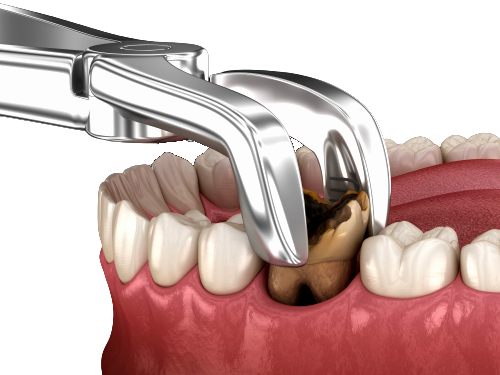Extraction
Our natural, permanent teeth are meant to last a lifetime; however, there are a number of situations in which one may require tooth extraction. If you have recently got a tooth extracted, then you must definitely take care of do’s and don’ts of aftercare. Taking tooth extraction aftercare can provide you relief from the extreme pain and help you heal properly.
When extraction of teeth has to done?
1. When a tooth is severly damaged due to caries.
2. If a tooth has become mobile due to infection in gums.
3. A teeth with endodontic treatment has periapical infection and it can’t be saved.
4. If teeth are damaged due to trauma of face and can’t be saved.
What is “impacted” third molar/Wisdom Tooth?
A third molar/wisdom teeth which has not fully erupted in oral cavity, and gets partially/fully trapped in gums or bone are called as impacted third molar or impacted wisdom teeth.

Do we need to remove impacted third molar?
Yes, if following symptoms persists, then third molar needs to be removed.
1. Infection in gums around the impacted third molar, it is called as “Pericoronitis”
2. If third molar is decayed and it can’t be restored.
3. If there is food lodgement around the third molar, which leads to caries in adjacent tooth.
4. If tilted third molar causes resorption of root of adjacent tooth.
Do we need to remove all types of third molars or wisdom teeth?
No, all the third molars need not be removed, only those third molars which are “impacted” or third molars which can cause infection, need to be removed.
How many impacted third molar/wisdom teeth are there in mouth?
They are 4 in numbers, 2 on the left side and 2 on the right side.
When removal of third molar is suggested by dental Surgeons?
If a impacted third molar cause following symptoms it is indicated for extraction.
1. Swelling around gums.
2. Pain around gums.
3. Food lodgement around gums.
4. Pain in the back of jaw.
5. Difficulty in mouth opening or chewing.
6. Foul smell.











